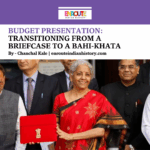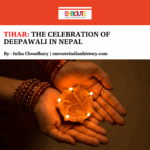Article Written By EIH Researcher And Writer
Bhavya Saini
We all have admired the Moon as it followed us during a car drive when we were young fascinated with it, a big white ball up in the sky trying to keep up with the car. In most Indian households, it is often introduced as ‘Chanda Mama’ to the young kids. According to Hindu mythology, the Moon or ‘Chandra’, also known as Soma, is the God of night as well as vegetation. It is considered as the essence of life. The lunar deity is revered differently among various populations and the difference lies with the male or female entity of the Moon since it is often linked with femininity and the female spirit. The God of night is also associated with pregnancy, childbirth and motherhood. Over the years, this divine femininity of the Moon has been widely celebrated and appreciated in various cultures, traditions and even in the media.
According to researchers, the cult of lunar deity found prominence in Asia and Europe during the Bronze and Iron ages and it was mainly worshipped for its analogy between the cycle of life and the lunar cycle. In Europe, the Moon has always been represented as Goddess, a feminine symbol overlooking birth, fertility and illuminating the darkness of the night. Various archeological evidences point to engravings and carvings depicting worship of the Goddess throughout the European continent. The Megalithic Temples of Malta are dedicated to the cult of Great Mother which spread in Europe during the Neolithic and Bronze ages with the circulation of Megaliths. While the Great Mother was identified by Gea (Earth) at first, it later shifted to the Moon. However, Moon worshipping can be traced back to Mesopotamia where it was represented as a male figure, whether human or animal. Federico Mailland, in his essay, interestingly notes, “the male lunar god of Asia has the same function of the Mother Goddess/Lucina worshipped in Europe” as the one who presided over fertility, childbirth and motherhood.
The contemporary era has adapted to the feminine nature of the Moon mainly due to the analogy between the phases of the moon and the menstrual cycle. In fact, throughout astrology and even ancient cultures, the energy of the Moon is associated with emotions, intuitions and instincts; qualities which have been socially attributed to women. The various phases of the Moon are much similar to the phases that a woman experiences during her menstrual cycle. A waxing moon represents the period of menstruation when the female body cleanses itself while letting go of the toxicity, whereas a full moon denotes ovulation, when the body is fulfilled, attractive and in its full glory. The binary of man and woman is often represented by the binary between the Moon and the Sun, with the Moon as the Mother and Sun as the father. This has been explored widely by philosophers, writers and poets in their works. W.B. Yeats, in most of his early poetry reflects upon the binary between Sun and Moon using it as an analogy for his works. In ‘Lines Written in Dejection’ (1915), Yeats establishes a balance in nature through the figure of centaur with the unification of the Sun and the Moon, man and woman. Thomas Parkinson, in his journal article The Sun and the Moon in Yeats’s Early Poetry mentions how Yeats’ own writing supports his view that “all living things have the sun for father and the moon for mother” (Yeats).
Writers, poets and even songwriters use Moon to talk about love and beauty. Many Bollywood lyricists have romanticised the Moon to appreciate the beauty of the lovers and their union and often attributed it to the female counterparts. When Shammi Kapoor described the beauty of Sharmila Tagore through the voice of Mohammad Rafi in ‘Yeh Chaand Sa Roshan Chehra’ (1964), the audience was filled with adoration. Rafi yet again admires the actress Waheeda Rehman in ‘Chaudhvin Ka Chaand’ (1960) singing, “Chaudhvin Ka Chaand Ho Ya Aaftaab Ho, Jo Bhi Ho Tum Khuda Ki Kasam Laajawab Ho!” Kishore Kumar’s most famous song ‘Mere Saamne Wali Khidki’ (1968) is also along these lines as Sunil Dutt cajoles Saira Banu. Comparing Tagore’s face to that of the Moon not only brought life to the song, but the Moon as well! Parthiv Gothil’s lyrics for ‘Yoon Shabnami’ from Sawariya (2007) admires Sonam Kapoor as the Moon itself ‒ “Dekho Chaand Aaya, Chaand Nazar Aaya”. More recently, ‘Tere Hawaale’ (2022) in Arijit Singh’s soulful voice beautifully expresses the fondness of a lover as the lyrics goes:
“Zara Kabhi Meri Nazar Se
Khud Ko Dekh Bhi
Hai Chaand Mein Bhi Daag
Par Na Tujhme Ek Bhi”
Trans. “See yourself through my eyes. Even the Moon has scars but you don’t have even one.”

Still from Zindagi Gulzar Hai (2012)
The romanticisation of the Moon is mostly associated with female beauty and love. In order to convince their partners, male actors appreciate their beauty to that of the Moon thus supporting the binary. The Moon as the feminine, glows through the light of the Sun, the masculine. However, the trend of romanticisation has given the Moon an identity of its own as an essence of the divine feminine which further finds its reflections in religious beliefs as well. Even though the Islamic month of Ramadan has nothing to do with the masculine or feminine entity of the moon, it remains significant in the culture since its sighting marks the beginning and end of the month. Even though the entity of the Moon is based upon the traditional histories and varies across geographical regions, its nature is perceived similar by all cultures ‒ a calming presence in a rather chaotic world.
References
Mailland, Federico. “Moon Worshipping in Prehistory: Fertility God or Goddess?.” Expression, March 2016, pp. 53-56. https://www.academia.edu/32100924/Moon_worshipping_in_prehistory_fertility_god_or_goddess
Parkinson, Thomas. “The Sun and the Moon in Yeats’s Early Poetry.” Modern Philology, vol. 50, no. 1, 1952, pp. 50–58. JSTOR, http://www.jstor.org/stable/435231. Accessed 28 Mar. 2023.
https://www.worldhistoryedu.com/chandra-hindu-god-of-the-moon/
Picture Credits: Twitter/@crybebii



















